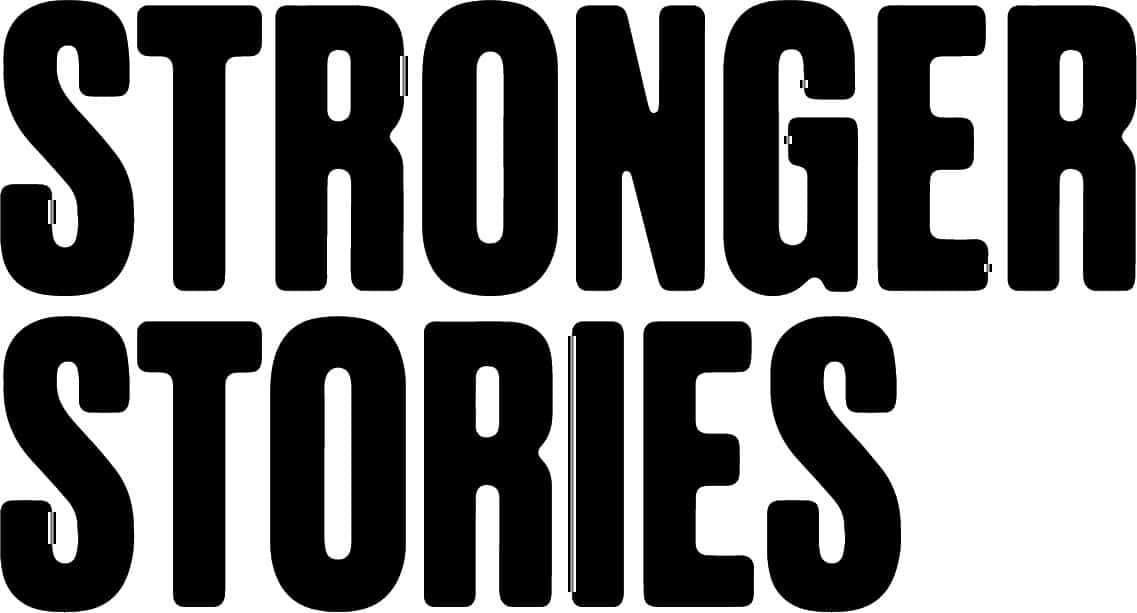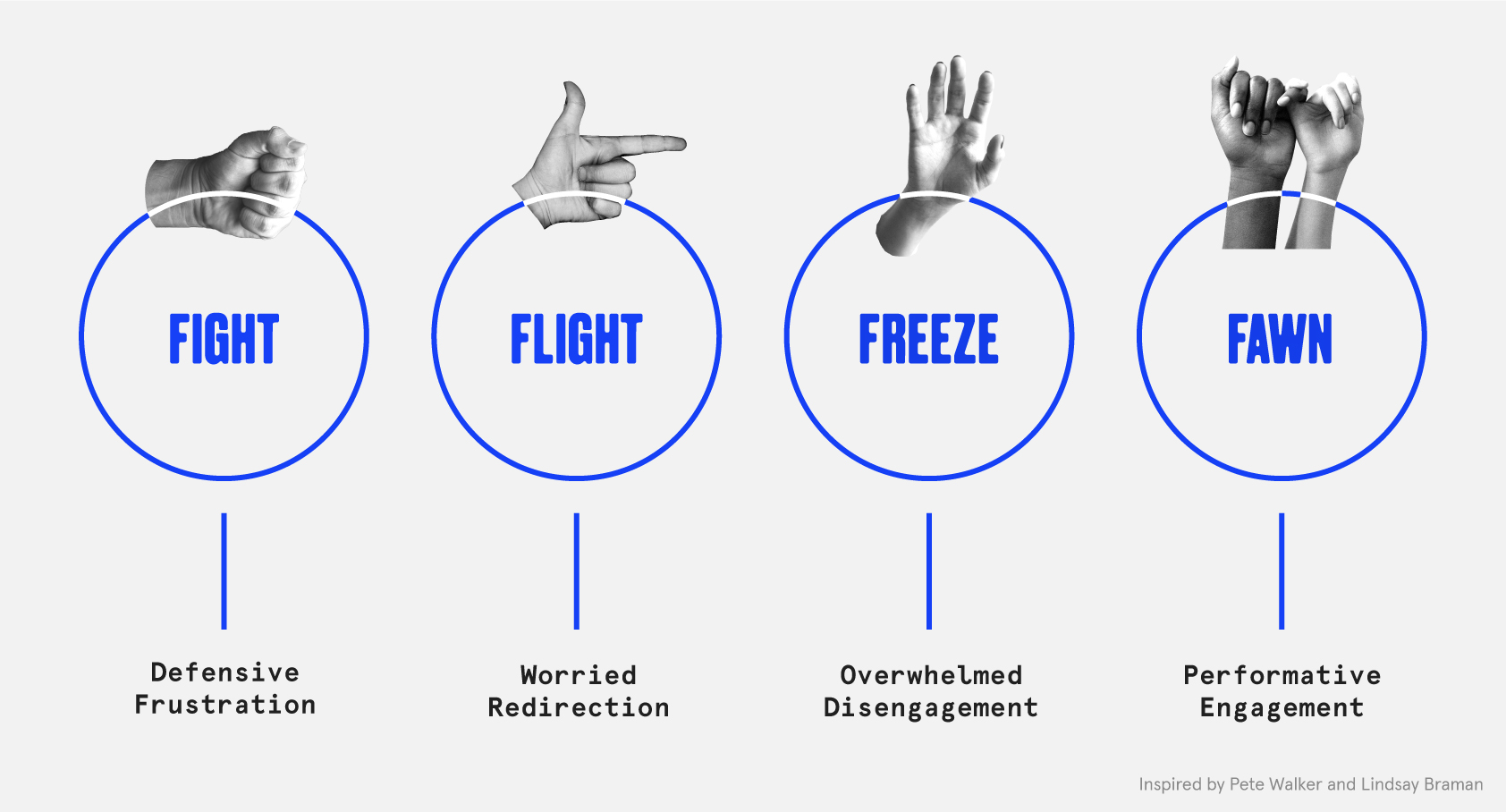
Fight, flight, freeze, fawn: Injecting courage into your story
- Written by Rosie Ngugi Ngugi
Fight, flight, freeze and fawn – we all have these instincts. These physiological reactions in our nervous system help us survive. Although they are automatic, they are also informed by the experiences we have and the stories we’re told.
For instance, our ancestor hunter-gatherers knew to fight or flee when faced with a physical threat due to their bodies’ chemical reactions, but also because of the stories told within their communities, e.g. ‘don’t poke the bear’. These reactions still hold true today.
Over time, our threats have evolved to include psychological scenarios. We don’t often encounter the need to run from bears, but we do experience survival instincts when we’re met with challenging information that doesn’t fit the stories we tell ourselves.
These reactions mean that stories about change become stuck. This is especially true for organisations needing and struggling to undergo transformation because it requires more than a new strategy. Instead, success relies on people having the courage to start to do things differently.
The lesser-known response, fawn, appears to be the most dominant when uncomfortable conversations or conflicts are had.
What’s fawning? It’s a concoction of cortisol and/or adrenaline leading to the response of abandoning our sense of self to meld into the threat-based context. This can look like a few easily recognisable things, e.g. ‘going with the flow’ even when it’s not healthy, people-pleasing to avoid negativity, and participating but withholding emotional investment. In other words, performative surface-level engagement. We do this to take the route of least resistance, shying away from the need for courage and action.
Once you hear about this response, you’ll begin to see it everywhere. And although these responses happen on an individual level, you can see how they interact and inform global systems change issues such as climate action, anti-racism, and gender equality. This is more understood than ever with the rise of terms such as ‘performative activism’. Because of this phenomena, you need to think about how your story engages with the ‘fawning majority’.
To take people on a journey of change, you may need to pivot your story to help them turn their fawn into courage. There are three ways you can begin to do this:
1. Paint the picture of a better world
People must be inspired beyond surface-level motivations to go on a journey of change. To do this, they must be given a clear vision of how they (and the world around them) will be better because of it. This keeps them going when the journey becomes difficult, and also provides them with dopamine rather than the cortisol and adrenaline released in fawn responses.
For example, when Microsoft CEO Satya Nadella took office, he came to realise a key cultural issue. The tech giant was stagnant due to limited innovation, communication, and investment in the mission. Rather than keeping the structure how it was and continuing siloed surface-level engagement, Nadella brought all the departments together under a new mission: To empower every person and every organization on the planet to achieve more. By showing everyone the better world, employee buy-in has been higher than ever and at 80% – so has Nadella’s approval rating!
2. Understand their mindset by listening
To know how to pivot your story, you must listen to others. Only by understanding why they fawn can you understand how you can help turn this into change. Storytelling can provide safe spaces where people can use different responses such as ‘tend and befriend’ which actually creates hope and triggers the biology of courage. Being heard can often be the first step to creating a level of psychological ownership.
For example, FAVI had mediocre levels of productivity but low morale. This was because employees didn’t have any say in processes or decision-making but had the hands-on knowledge. By listening to the stories of employees, FAVI was able to pivot their strategy and internal processes, giving employees a voice and enabling them to inform the FAVI story. More freedom created more success and they quickly grew to a 50% market share, whilst maintaining employee happiness.
3. Think about how you can enable deeper commitment
To help people go on a journey of change and take a step of courage, you need to think about how you ask them to commit and what you can put in place to enable a deeper commitment. Providing the right support, at the right time, might be all it takes to help them take the leap.
For example, Netflix has clear support in place to continuously foster innovation and work towards its mission of entertaining the world. They have created a culture where ‘you don’t try to please your boss, you practice radical candour instead.’ This radical candour takes place at all levels of the organisation and from big decisions to minute ones. But the story they tell of honesty enables people to constantly recommit to the mission.
It can be difficult to bring people on a journey of change with you. But, shifting responses of performative surface-level commitment is a step in the right direction of deep meaningful action and achieving your better world.
Share:
Grow Your Good Idea Faster
New ideas are precious. Win support by learning how to create and tell a stronger story – join our Lean Story School for free.

Related posts
The Blueprint for Change
On the morning of October 16th, our inbox pinged with a message from the team at The Blueprint, a message that would...
When nature lovers are bad for our planet
There are many different ways to feel a connection with nature, but strict tribal definitions stop most of us from...
Fight, flight, freeze, fawn: Injecting courage into your story
Fight, flight, freeze and fawn – we all have these instincts. These physiological reactions in our nervous system...
Learn from the strongest stories about change
Sign up here to receive our monthly newsletter that explores great storytelling about brilliant ideas. Don’t worry you can unsubscribe at any time.
We’re working hard to walk the talk.
We’re proud to have been awarded The Blueprint and B Corp status in recognition of our work towards creating a better world.


